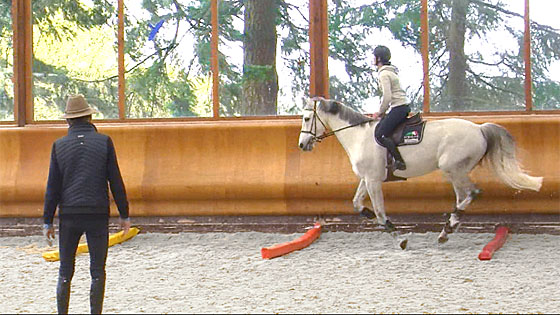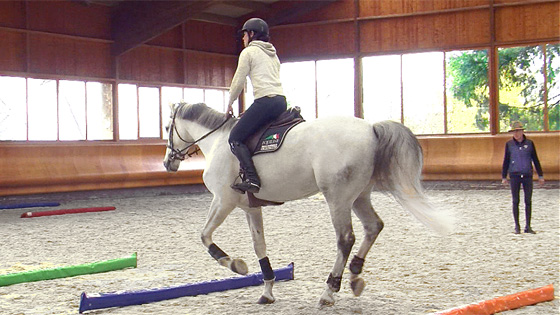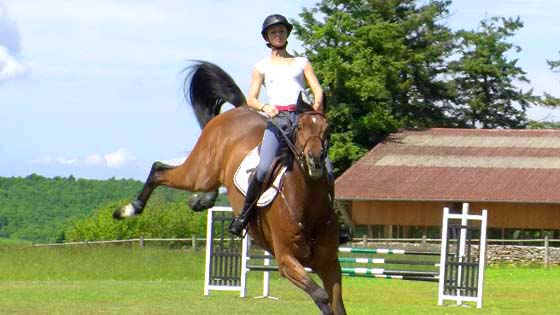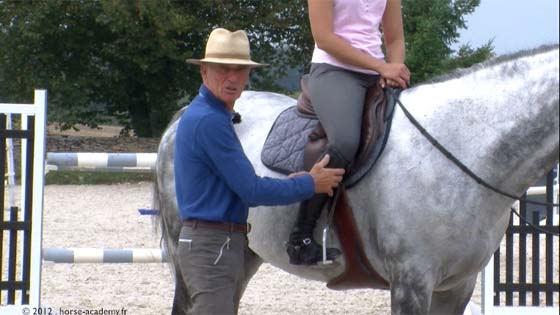How to increase and decrease the canter stride keeping the energy and suppleness

This second phase of the exercise consists of practising transitions within the canter, meaning to go from a shorter canter stride to a longer canter stride, and vice versa.
In the previous exercise, we learned how to transition from one gait to another with a rider able to stay in the rhythm and flow of motion of her horse. To do so, we know how important it is that the rider minds the physical and mental priorities such as planning the track ahead of time and keeping a centred position, to name a few. The previous practice at the slower gaits enabled the rider to develop good reflexes and made her and the horse accustomed to this exercise set-up.
The second phase of the exercise consists of practising transitions within the canter, meaning to go from a shorter canter stride to a longer canter stride, and vice versa. We know that the ability to modify the length of the canter stride is essential to adapt to the requirement of a jumping course. This allows the rider to get a related distance, to increase the length of the stride to gain some time during a jump-off, or even to decrease the stride to gain more pushing power. There is so much to work on quietly at home before heading to a horse show.
For the horse, just the act of stretching, opening and shortening his body like an accordion is an excellent workout to increase the flexibility of his top line.
Once again you will be successful with this exercise only if your aids are as discrete as possible. Behaviours such as getting agitated, pulling or pushing, or even reacting abruptly are to be banned. We are seeking a well-planned and prepared exercise with fluidity in the transition and going over the ground poles.
This exercise is linked to the sheet CA4 of the booklet Training program 1
lene performs this exercise with Surf de la Cense. Michel has modified the set-up from the previous exercise to adapt it to this exercise. The Flexy-jumps on the ground are great landmarks to get the rider to stay aware at all times of all the check points.
To Michel, the position and seat movement of the rider Selene, should be taken as a reference for all levels of riders.



